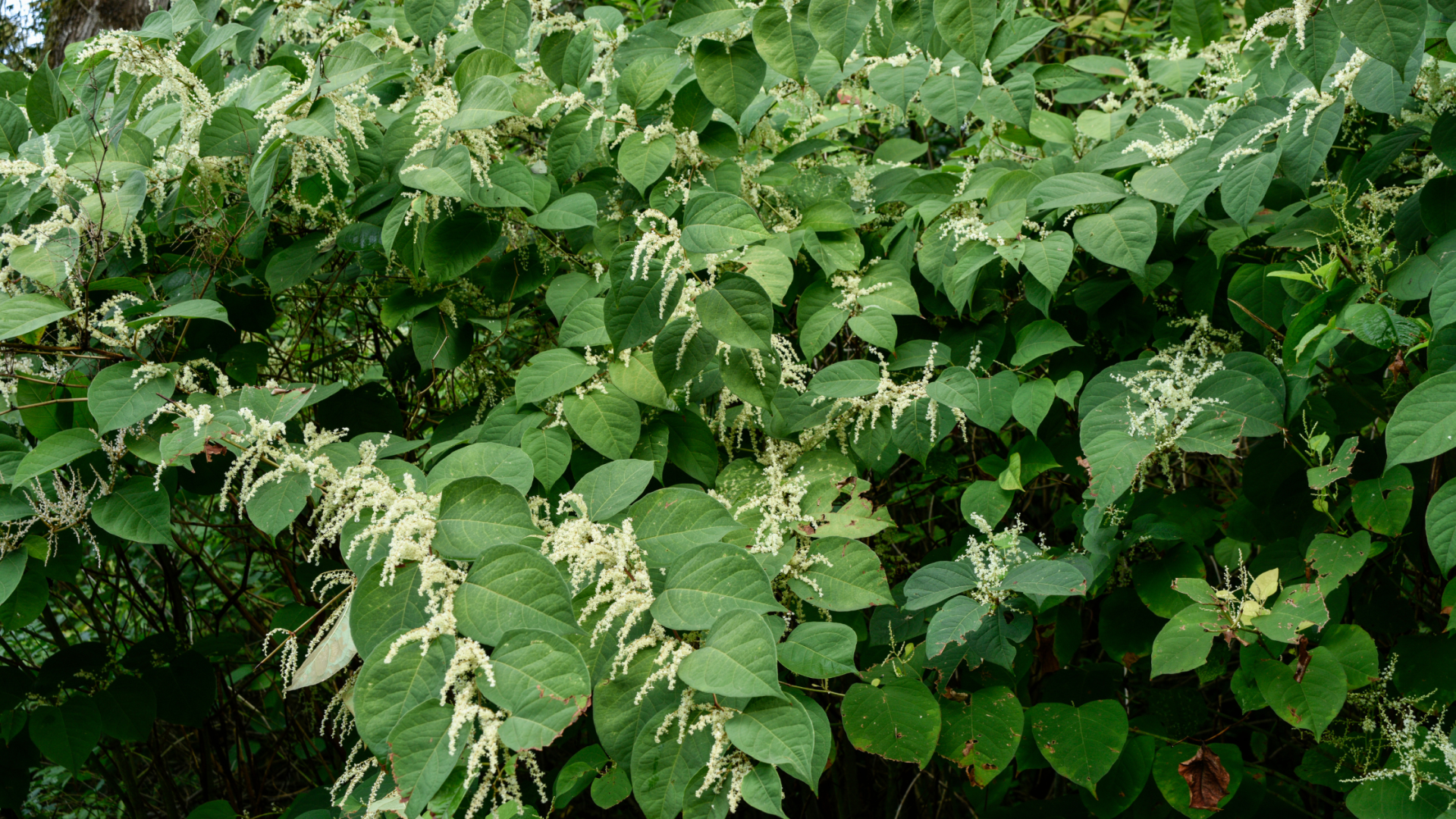Spring is finally here and green shoots are appearing in gardens across Hampshire and Sussex but do you know if those buds and stems are a thing of beauty or a sign of something more sinister?
If you are planning to purchase a property or sell your current home, it’s worth noting that outside space – or what’s in it – can cause consternation. Non-native invasive species growing either in a garden or close to the boundary present double trouble. Reports suggest their presence can knock up to 15% off a home’s value, while their aggressive growing habits can damage properties.
Under the provisions made within Schedule 9 of the Wildlife and Countryside Act 1981, it is a criminal offence to plant or cause to grow in the wild 36 non-native invasive species – many of which are very attractive and wouldn’t look out of place in Chichester, Gosport or Bognor Regis gardens!
On the list are Himalayan balsam (Impatiens glandulifera), Cortaderia jubata (purple pampas grass), Hyacinthoides hispanica (Spanish bluebell) and three types of Rhododendron. It's worth familiarising yourself with the list in case they’re offered for sale – quite commonly unlabelled - at plant sales or boot fares, or gifted by generous green-fingered friends.
Home movers should pay most attention to the invasive species that can inflict damage on a property or prevent a purchasing from obtaining a mortgage. Of course, most of us know of Japanese Knotweed (Reynoutria japonica syn. Fallopia japonica) – but more recently, some types of bamboo and ivy have been flagged up as damaging plants.
- Bamboo
Many gardeners will have unwittingly planted running bamboo (with an aggressive growing habit) instead of the clump-forming variety. Running bamboo spreads faster and further than Japanese Knotweed. Worryingly, a poll of more than 2,000 people commissioned by Environet found almost 20% of British adults had bamboo in their own garden or growing at an adjacent property. Bamboo rhizomes can create cracks in patios, infiltrate brickwork, damage driveways, force their way between roof shingle and even grow through pipes.
- English Ivy
Deeply embedded in English folklore, ivy is a climbing plant encouraged to grow in order to hide unattractive structures. English Ivy (Hedera helix sp.) supports itself using a dense network of aerial roots. They cling on by penetrating cracks or gaps in brickwork, plasterwork and fence panels. The aerial roots can burrow into mortar joints, push bricks apart, and even eat away at timber window frames and fascia boards.
- Japanese Knotweed
Japanese Knotweed is thought to be present at anywhere between 1% and 5% of English properties. It can force its way into a building’s foundations, push up through paved areas and make existing cracks worse. White & Brooks has produced this mini guide Japanese Knotweed for more information on detecting and treating this invasive plant.
What can buyers do
Buyers should note that a mortgage valuation survey will not identify invasive species. Instead, they should commission a full survey by a registered chartered surveyor, who is specifically trained to spot signs of damaging, invasive plants.
What can sellers do
As well as inspecting the label of all plants purchased and avoiding buying plants from unofficial sources, sellers may want to pre-empt any problems. They can commission a specialist invasive species survey to identify the presence of any harmful plants ahead of a sale, giving them time to eradicate any problems.
If you are planning to move home this spring and would like advice about property surveys or outside space, contact White & Brooks.


 By
By 



Share this with
Email
Facebook
Messenger
Twitter
Pinterest
LinkedIn
Copy this link